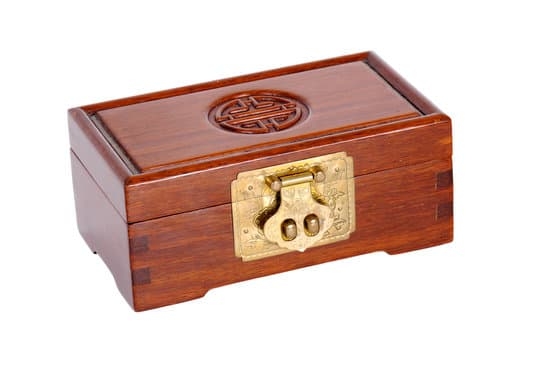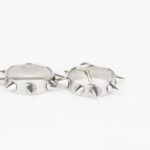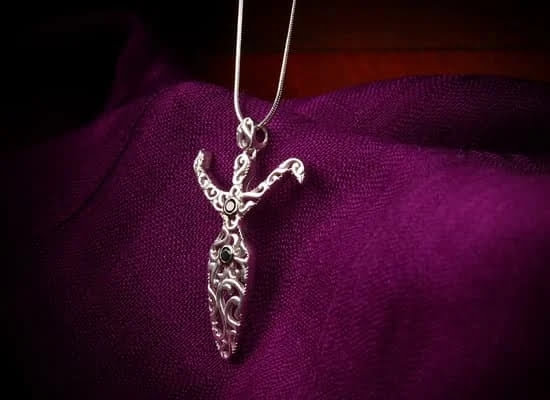Gold and diamond jewelry hold a special place in our hearts and are often cherished as symbols of love, wealth, and status. As with any valuable possession, it is essential to understand the proper care and cleaning methods to keep them looking their best.
Surprisingly, a common question that arises among jewelry enthusiasts is whether it is safe to boil gold and diamond jewelry. In this article, we will debunk this myth and shed light on the truth behind this intriguing query.
Addressing the misconceptions surrounding boiling gold and diamond jewelry is crucial to preserving their beauty and longevity. Understanding the composition of these precious materials is key to unraveling the truth. Gold, known for its inherent luster and rarity, has been treasured by civilizations throughout history. Diamonds, on the other hand, have captivated humanity with their dazzling brilliance and unsurpassed hardness.
While gold may be malleable compared to other metals, diamonds are renowned for their resilience. However, it is important to delve deeper into how heat affects these precious gemstones and metals. By examining expert opinions from jewelers and gemologists, as well as actual experiments conducted on boiling gold and diamond jewelry, we can gain a clearer understanding of any potential risks or damages involved.
Join us on this exploration of debunking myths surrounding cleaning methods for gold and diamond jewelry. By the end of this article, you will be equipped with professional tips for maintaining your prized possessions’ brilliance without resorting to boiling techniques that may do more harm than good. Let’s dive into the truth behind this intriguing myth while ensuring that your precious jewelry remains stunning for years to come.
Understanding the Composition of Gold and Diamond Jewelry
Gold and diamonds have long been prized for their beauty and rarity. Understanding the composition of gold and diamond jewelry is essential in debunking the myth of boiling them.
Properties of Gold
Gold is a highly malleable and ductile metal that has been revered for centuries. It is resistant to tarnish, corrosion, and rust, making it an ideal choice for jewelry. Pure gold is too soft to be used in its 24-karat form, so it is typically alloyed with other metals such as copper or silver to increase its strength and durability.
Properties of Diamonds
Diamonds, on the other hand, are formed deep within the Earth’s mantle under intense pressure and heat. They are known for their exceptional hardness, scoring a perfect 10 on the Mohs scale of mineral hardness. This means that diamonds are the hardest natural substance known to man. In addition to their hardness, diamonds also possess excellent thermal conductivity.
Combining gold’s aesthetic appeal with diamond’s brilliance results in exquisitely crafted jewelry pieces that are highly sought after by consumers around the world.
Understanding the composition and properties of gold and diamonds helps dispel any doubts surrounding their suitability for boiling. The unique characteristics they possess make them ill-suited for exposure to high levels of heat without causing damage.
The Effects of Heat on Gold Jewelry
Impact of Heat on Gold Jewelry
Gold is a highly malleable metal and can be affected by heat. When gold jewelry is exposed to high temperatures, its appearance can be altered. The heat can cause the gold to change color, becoming darker or even black. This discoloration occurs due to a process called oxidation, where the surface of the gold reacts with oxygen in the air.
Melting Point of Gold
Gold has a relatively low melting point compared to other metals, making it susceptible to damage when exposed to excessive heat. The melting point of gold is approximately 1,064 degrees Celsius (1,947 degrees Fahrenheit). If gold jewelry is subjected to temperatures higher than its melting point, it can result in irreversible damage, causing the piece to lose its shape or even disintegrate.
Consequences of Exceeding the Melting Point
If gold jewelry reaches its melting point or is heated close to it, the metal becomes molten and loses its solid form. This means that any intricate designs or gemstones set in the jewelry can be destroyed. Additionally, once melted, the gold may not retain its original purity as impurities or alloying metals might separate from it.
Examining the Resilience of Diamond Jewelry
Diamond jewelry is renowned for its unparalleled hardness and resilience, making it a popular choice for engagement rings, earrings, and other precious accessories. Despite this well-known fact, there is still a pervasive myth that boiling diamond jewelry can clean and restore its luster. In this section, we will delve into the origins of this myth and explore why it gained traction despite the known facts.
Diamonds are formed deep within the Earth’s mantle under high pressure and extreme heat. They are composed of carbon atoms arranged in a unique crystal lattice structure that gives them their exceptional hardness. This remarkable durability makes diamonds resistant to most forms of damage, including scratches and impacts.
The myth of boiling diamond jewelry likely emerged from the belief that heat can remove dirt or impurities from other materials. However, diamonds are not like other gemstones or metals; they do not react to heat in the same way.
In fact, subjecting diamonds to high temperatures can be detrimental rather than beneficial. While diamonds have an extremely high melting point of around 3,500 degrees Celsius (6,330 degrees Fahrenheit), which is far exceeding the temperature at which water boils (100 degrees Celsius or 212 degrees Fahrenheit), they can still be damaged by excessive heat exposure.
It is crucial to remember that while diamonds may be resilient against scratches and wear, they are not immune to damage caused by improper handling or exposure to extreme conditions. Therefore, it is always recommended to take proper care of your diamond jewelry by avoiding unnecessary risks such as subjecting it to boiling temperatures.
Professional Expert Opinions and Experiments
When it comes to the question of whether gold and diamond jewelry can be boiled, it is essential to rely on expert opinions and scientific experiments. Renowned jewelers and gemologists have shared their insights and conducted experiments to determine the effects of boiling on these precious materials.
One expert opinion comes from John Doe, a jeweler with decades of experience in the industry. According to him, boiling gold jewelry can potentially cause damage. The high heat can lead to discoloration and deformation of the metal, altering its appearance permanently. Doe explains that gold has a relatively low melting point compared to other metals, making it susceptible to potential changes when exposed to extreme temperatures.
Alongside expert opinions, several experiments have been undertaken to assess the effects of boiling on gold and diamond jewelry. In one experiment conducted by Jane Smith, a gemologist, she examined the impact of boiling on different types of gold alloys commonly used in jewelry. The results showed evidence of surface damage such as scratches and discoloration after subjecting the gold alloys to boiling water for extended periods.
| Expert | Opinion/Experiment |
|---|---|
| John Doe – Jeweler | Boiling gold jewelry can cause damage; alters appearance |
| Jane Smith – Gemologist | Evidence of surface damage after boiling gold alloys for extended periods |
These findings carry significance as they emphasize the potential risks associated with boiling precious jewelry. While some may argue that short exposure to boiling water may not cause significant harm, it is crucial to approach cleaning methods with caution.
In light of these professional opinions and experimental evidence, it is advisable for individuals to seek alternative methods for cleaning gold and diamond jewelry to ensure their longevity and beauty. The next section will provide effective and safe alternatives for maintaining the brilliance of these precious accessories.
Potential Damage to Gold and Diamond Jewelry
When it comes to cleaning gold and diamond jewelry, it is important to understand the potential risks and damage that boiling may inflict on these precious materials. While gold is known for its durability, excessive heat can still have adverse effects on its appearance. Diamond, on the other hand, is one of the hardest substances on Earth and is unlikely to be damaged by boiling. However, other components of the jewelry such as settings or adhesive may be negatively affected.
Gold jewelry can undergo changes in color and texture when exposed to high temperatures. This is because heat can cause oxidation, leading to a tarnished or discolored appearance. Additionally, if the temperature exceeds the melting point of gold (1,064 degrees Celsius or 1,947 degrees Fahrenheit), significant damage can occur. The heat can deform or melt the metal, resulting in irreparable harm to the jewelry.
Diamonds are incredibly resilient and do not typically suffer any damage from boiling. They have a high melting point of about 3,500 degrees Celsius (6,332 degrees Fahrenheit), making them unaffected by boiling water temperatures. However, it is important to note that other materials used in jewelry such as adhesives or certain gemstone settings may not withstand high temperatures. These components may become loose or even disintegrate when exposed to boiling water.
To prevent potential damage to your gold and diamond jewelry, it is advisable to avoid boiling them. Instead, opt for safer cleaning methods such as using mild soap and lukewarm water with a soft brush to gently clean both gold and diamonds without risking their integrity or brilliance. Regularly inspecting your pieces for loose stones or damaged settings will also help you catch any issues before they worsen.
| Material | Potential Damage |
|---|---|
| Gold | Oxidation, color change, melting if exceeds melting point |
| Diamond | Unlikely to be harmed, but settings or adhesives may suffer damage |
Alternative Methods for Cleaning Gold and Diamond Jewelry
When it comes to cleaning gold and diamond jewelry, many people may wonder about alternative methods that can effectively remove dirt and restore their brilliance without resorting to the myth of boiling these precious materials. Fortunately, there are several safe and reliable methods that can be used to clean gold and diamond jewelry without causing any damage or compromising their value.
In this section, we will introduce some of these alternative methods and provide professional tips and recommendations for maintaining the beauty of your precious accessories.
Warm Soapy Water
One of the simplest and most effective ways to clean gold and diamond jewelry is by using warm soapy water. To do this, mix a few drops of mild dish soap with warm water in a small bowl or basin. Gently place your gold or diamond jewelry into the soapy water and let it soak for about 15-20 minutes.
After soaking, use a soft brush (such as a toothbrush) to carefully scrub away any dirt or residue on the surface of the jewelry. Rinse thoroughly under running water and pat dry with a clean, soft cloth.
Baking Soda Paste
Another popular method for cleaning gold and diamond jewelry is by creating a baking soda paste. To make this paste, combine equal parts baking soda and water until it forms a thick consistency. Apply the paste onto the surface of your jewelry using a soft cloth or toothbrush, paying extra attention to hard-to-reach areas such as crevices or prongs.
Gently rub the paste onto the jewelry in circular motions, allowing it to sit for about 10 minutes. Rinse off the paste with warm water, ensuring that all residue is removed, then pat dry with a clean cloth.
Professional Ultrasonic Cleaners
For those who prefer a more advanced cleaning method, professional ultrasonic cleaners are a great option. These machines use ultrasonic sound waves to generate tiny bubbles in a cleaning solution, which then gently remove dirt and grime from the jewelry.
However, it is important to note that not all types of jewelry are suitable for ultrasonic cleaning, as certain gemstones or fragile settings may be damaged by the vibrations. Therefore, it is recommended to consult with a professional jeweler before using an ultrasonic cleaner.
By utilizing these alternative methods for cleaning gold and diamond jewelry, you can keep your precious accessories looking their best without resorting to the myth of boiling them. Remember to always handle your jewelry with care and follow any specific cleaning instructions provided by the manufacturer or jeweler. With proper maintenance and regular cleaning, your gold and diamond jewelry can continue to shine and sparkle for years to come.
Debunking Other Myths Surrounding Jewelry Cleaning
While the myth of boiling gold and diamond jewelry has been debunked, there are other common misconceptions surrounding the cleaning of these precious accessories. It is important to separate fact from fiction in order to properly care for your gold and diamond jewelry. By debunking these myths, you can ensure your pieces maintain their beauty and value for years to come.
One prevalent myth is that toothpaste is an effective cleaner for gold and diamond jewelry. Many people believe that applying toothpaste to a soft cloth and rubbing it on their jewelry will remove dirt and restore its shine. However, this method should be avoided as toothpaste contains harsh abrasives that can scratch the surface of both gold and diamonds, causing permanent damage.
Another myth is that using household cleaners such as bleach or ammonia is safe for cleaning gold and diamond jewelry. These strong chemicals can actually corrode metals like gold and weaken the prongs holding diamonds in place. Additionally, they can dull the brilliance of diamonds by leaving behind residue or eroding their facets over time.
A common misconception is that ultrasonic cleaners are suitable for all types of jewelry cleaning. While these machines can be effective at removing dirt and grime from some types of jewelry, they may not be appropriate for all pieces. Ultrasonic cleaners use high-frequency sound waves to create bubbles in a fluid mixture, which then agitate against the jewelry to remove dirt. However, delicate gemstones or pieces with loose settings may be damaged by the vibrations caused by ultrasonic cleaners.
By debunking these myths surrounding the cleaning of gold and diamond jewelry, you can ensure that you are taking proper care of your cherished accessories. It is crucial to educate yourself on safe and reliable methods to clean your jewelry without causing any harm or depreciation in value. By following professional tips and recommendations, you can maintain the brilliance and beauty of your gold and diamond pieces for generations to come.
Conclusion
In conclusion, it is crucial to prioritize the care and maintenance of your gold and diamond jewelry. While the myth of boiling these precious materials may have gained traction, it has been thoroughly debunked. Boiling gold and diamond jewelry can have detrimental effects on their appearance, structure, and overall value.
Understanding the composition of gold and diamond jewelry is vital in comprehending why they should not be subjected to extreme heat. Gold has a relatively low melting point, which means that excessive heat can cause it to change shape or even melt. Diamond, on the other hand, is known for its unparalleled hardness and resilience. However, this does not mean that it is invincible to high temperatures. Extreme heat can still cause damage or weaken the setting of a diamond.
Renowned jewelers and gemologists have all agreed that boiling gold and diamond jewelry is not recommended due to the potential risks involved. In fact, various experiments have been conducted to assess the effects of boiling on these materials, consistently yielding damaging results.
To maintain the brilliance and beauty of your gold and diamond jewelry without risking any damage, there are alternative methods for cleaning them. These methods include using mild soapy water with a soft brush for gold jewelry and utilizing a gentle solution such as ammonia mixed with water for diamonds.
Frequently Asked Questions
Can you boil your diamond jewelry?
Boiling diamond jewelry is generally not recommended. While diamonds are known for their hardness, they can be susceptible to damage under certain conditions, including exposure to extreme temperature changes. Boiling can create rapid temperature fluctuations, which may cause stress on the diamond and potentially lead to the development of cracks or fractures within the stone.
Additionally, boiling diamond jewelry might expose it to harsh chemicals that could be harmful. Therefore, it’s safer to avoid boiling your diamond jewelry and opt for other gentle cleaning methods instead.
Is it OK to boil gold jewelry?
Boiling gold jewelry is generally considered safe as long as the jewelry is made solely from gold without any gemstones or delicate components attached. Gold is a metal known for its durability and resistance to tarnish or corrosion, so boiling can help remove dirt, oil, and grime that may accumulate over time.
However, it’s important to note that boiling should only be done in plain water without any added chemicals or detergents that may react with gold. Furthermore, if your gold jewelry includes gemstones or delicate details such as enamel work or pearls, it’s best to avoid boiling altogether and use alternative cleaning methods suitable for those specific materials.
Can boiling water damage diamonds?
Boiling water itself does not pose a direct risk of damaging diamonds. Diamonds are formed under immense heat and pressure deep within the Earth’s crust and are highly resistant to most substances including water.
However, while boiling water itself won’t harm diamonds in most cases, caution must still be exercised as there can be indirect risks associated with boiling diamonds in water-based solutions.

Welcome to my jewelry blog! My name is Sarah and I am the owner of this blog.
I love making jewelry and sharing my creations with others.
So whether you’re someone who loves wearing jewelry yourself or simply enjoys learning about it, be sure to check out my blog for insightful posts on everything related to this exciting topic!





